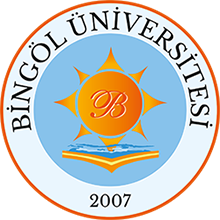Malatya İl Merkezi ve İlçelerinde Süt Sığırcılığı Yapan İşletmelerde Kullanılan Yem Çeşitleri ve Uygulanan Yemleme Şekilleri
Abstract
ÖZET:
Bu çalışma, Malatya ili ve ilçelerinde süt üretimi yapan işletmelerde kullanılan yem çeşitleri ve yemleme şekillerini belirlemek amacıyla yürütülmüştür. Çalışmanın ana materyalini, Malatya ili merkez ilçeleri (Battalgazi ve Yeşilyurt) ile 11 ilçesinde Damızlık Sığır Yetiştiricileri Birliğine kayıtlı üyelerden rastgele seçilen 246 üye ile yapılan anket sonuçları oluşturmuştur. Elde edilen sonuçlara göre, süt sığırı işletmelerinin en yoğun olduğu ilçelerin Yazıhan, Yeşilyurt ve Arguvan ilçelerinde bulunduğu ve bu ilçelere ait işletme sayılarının sırasıyla; 52, 50 ve 42 adet olduğu belirlenmiştir. Eğitim düzeyleri bakımından, yetiştiricilerin % 57,3’sinin lise, %23,6’sının ise ortaokul mezunu olduğu görülmüştür. Üreticilerin çoğunun 36-45 (42,6) ile 46-55 (29,5) yaş arağında olduğu saptanmıştır. Sığırcılık konusunda eğitim alanların üreticilerin oranının %13,6 olduğu, %86,2’sinin ise hiçbir eğitim almadığı belirlenmiştir. Arazi büyüklüğü bakımından işletmelerin %54,0’ü 51-100 dekar, %38,9’u ise 0-50 araziye sahiptir. İşletmelerin %71,1’nin kapalı ahıra sahip olduğu gözlenmiştir. Yetiştiriciliği yapılan sığır ırklarının %76,4’sının Simmental melezi, %13,0’ünün Simmental ırkı ve %10,6’sının Montofon melezi olduğu saptanmıştır. İşletmelerin kaba yem üretmek için kullandıkları arazi daha çok 1-50 dekar aralığında olup, %68 oranındadır. Üreticiler, hayvan teminini daha çok yurt içindeki üretici veya pazarlardan yapmakta (%87,0), ithal yoluyla hayvan temin edenlerin oranı ise %31’tür. İşletmelerin ürettiği kaba yemler genel olarak, mısır silajı, kuru yonca, buğdaygil samanı ve fiğdir. Bazı işletmeler (%13,0), ekim yapacak arazileri olmadığında kaba yem üretimi yapmamaktadır. Hayvan başına günlük 7-8 kg silaj veren işletmelerin oranı %37,8, 5-6 kg verenlerin oranı ise %35,0 olarak belirlenmiştir. Hayvan başına günlük en fazla kuru yonca veren (3-4 kg) işletmelerin oranı %67,5 olarak saptanmıştır. İşletmelerde hayvanlar genelde günde iki kez yemlenmekte olup (%82,5), günde 3 veya 1 kez yemleme yapılanların oranı (%17,5) çok azdır. İşletmelerin %40,7’si mera dönemi geldiğinde hayvanlarını meraya çıkarmakta, %59,3’ü ise meraya çıkarmamaktadır. Sonuç olarak, süt sığırcılığı yapılan işletmelerde kombine verimli ırkların melezlerinin daha çok tercih edildiği, işletmelerin çoğunun kendi ihtiyacı olan kaba yemin tamamını üretemediği, bazı işletmelerin ise hiç kaba yem üretmediği, yemleme şekillerinin ve yem çeşitlerini farklılık gösterdiği söylenilebilir. ABSTRACT:
This study was carried out in order to determine the feed types and feeding methods used in dairy farms in Malatya province and its districts. The main material of the study was the results of the survey conducted with 246 members randomly selected from the members of the Cattle Breeders Association in the central districts of Malatya (Battalgazi and Yeşilyurt) and 11 districts. According to the results, the districts where dairy cattle farms are most concentrated are located in Yazıhan, Yeşilyurt and Arguvan districts and the number of business belonging to these districts are respectively; It was determined that there were 52. 50 and 42 pieces. In terms of education levels of producers, 57.3% of the breeders were high school graduates and 23.6% were secondary school graduates. Most of the producers were found to be between the ages of 36-45 (42.6) and 46-55 (29.5). It was determined that the rate of producers who received training in cattle breeding was 13.6%, and 86.2% did not receive any training. In terms of land size, 54.0% of the enterprises have 51-100 decares and 38.9% of them have 0-50 lands. It has been observed that 71.1% of the enterprises have closed barns. It has been determined that 76.4% of the cattle breeds that have been bred are Simmental cross, 13.0% are Simmental breed and 10.6% are Montofon crossbreeds. The land used by the enterprises to produce coarse feed is mostly in the range of 1-50 decares and is 68%, Producers mostly procure animals from domestic producers or markets (87.0%), and the rate of those who procure animals through import is 31%. The coarse feeds produced by the enterprises are generally corn silage, dried alfalfa, wheatgrass straw and vetch. Some enterprises (13.0%) do not produce coarse feed when they do not have land to cultivate. The rate of enterprises that give 7-8 kg of silage per animal per day is determined as 37.8%, and the rate of those that give 5-6 kg per day is 35.0%. The rate of the enterprises that give the highest amount of dry alfalfa per animal per day (3-4 kg) was found to be 67.5%. In the enterprises, animals are generally fed twice a day (82.5%), the rate of those who feed 3 or 1 times a day is very low (17.5%). 40.7% of the enterprises take their animals to the pasture when the pasture season comes, while 59.3% do not. As a result, it can be said that crossbreeds of combined productive breeds are more preferred in dairy cattle farms, most of the enterprises do not produce all the coarse feed they need, some enterprises do not produce roughage at all, and the types of feeding are different.
Collections
- Zootekni [29]

DSpace@BİNGÖL by Bingöl University Institutional Repository is licensed under a Creative Commons Attribution-NonCommercial-NoDerivs 4.0 Unported License..













